5 Companion Plants for Lamb’s Ear (With Pictures)
-
Jana Blagojevic
- Last updated:
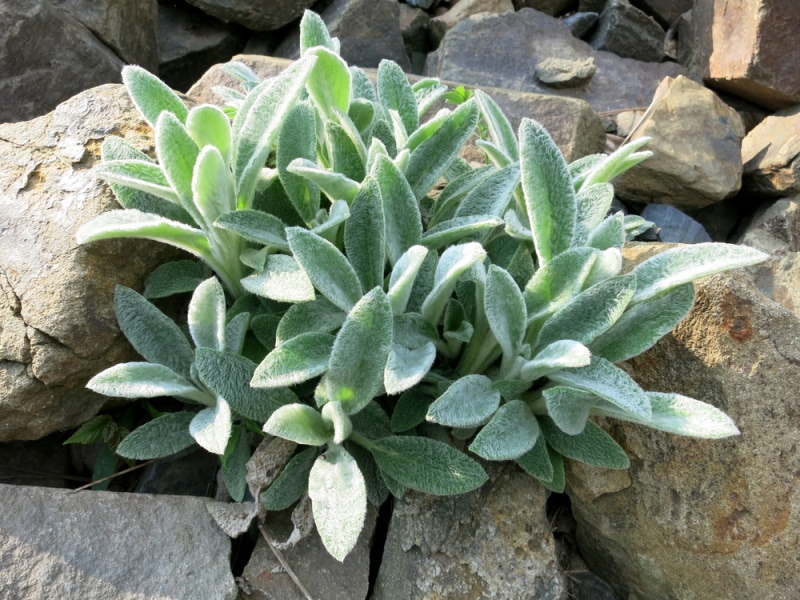
It’s a great idea to use companion plants for lamb’s ear, especially if you have free room to plant additional herbs or plants. Many plants pair well with lamb’s ear, but some can cause issues when planted nearby, so it is necessary to do your research beforehand. Luckily, you’re in the right place!
In the list below, you can find plants that will bring many benefits to your garden when planted near a lamb’s ear, as well as some advice on which plants to avoid.
The 5 Companion Plants for Lamb’s Ear
1. Hydrangea
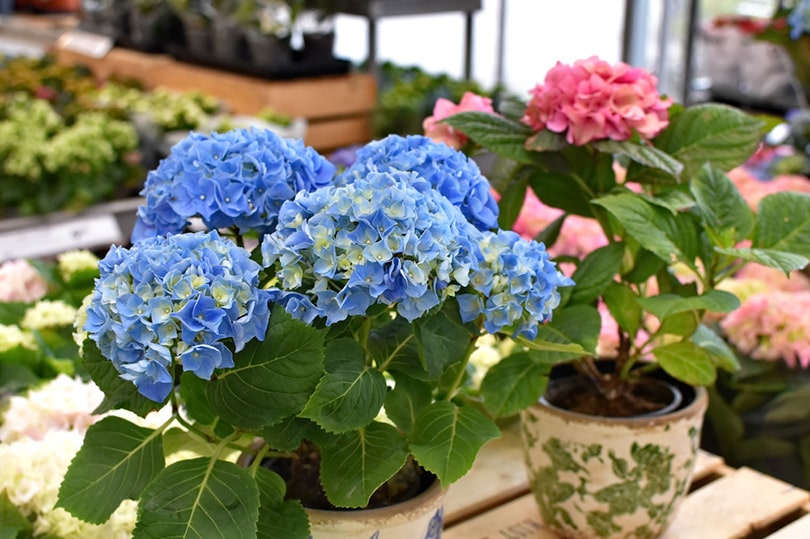
| Botanical name | Hydrangea |
| Sun requirements | Partial shade |
| Soil requirements | Rich and well-drained soil |
Lamb’s ear paired with hydrangea creates a lovely garden, complementing plants that give your garden a cottage feel. These two plants thrive under the same conditions, requiring full to partial sunlight. When watering these plants, make sure not to overwater the soil, as the plant can quickly begin to rot. Hydrangea and lamb’s ear are paired primarily because of their unique appearances that fit very well together.
Lamb’s ear has a unique velvety texture and a silvery color, which will sit very well with the colorful and dramatic hydrangea.
2. Black-Eyed Susan
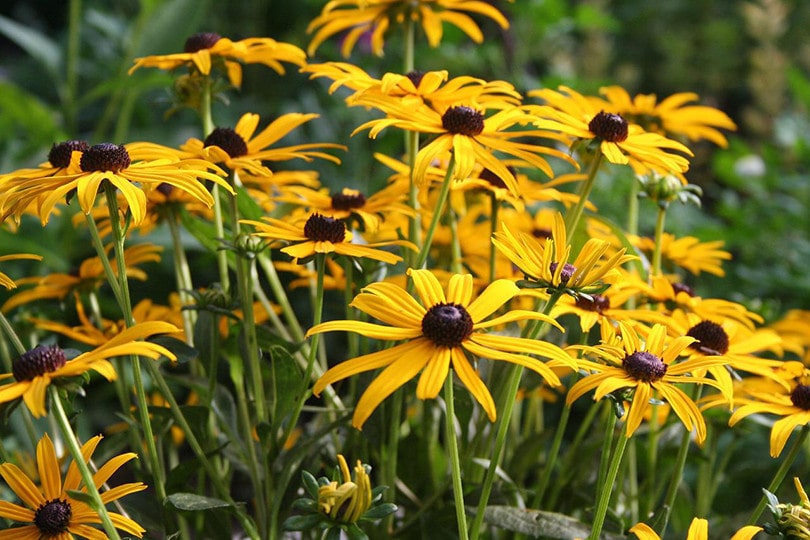
| Botanical name | Rudbeckia hirta |
| Sun requirements | Full sun exposure |
| Soil requirements | A moist but well-draining soil |
The black-eyed Susan is one of the best companion plants for lamb’s ear. This plant has a unique appearance that adds a lot of brightness and energy to any garden. The black-eyed Susan enjoys the sun as much as lamb’s ear, making them ideal to plant together. The best feature of these plants is that they require minimum maintenance and are straightforward to grow.
The only thing to keep in mind when growing black-eyed Susans is to provide them with soil that can retain moisture well and to provide them with plenty of natural sunlight.
3. Sage
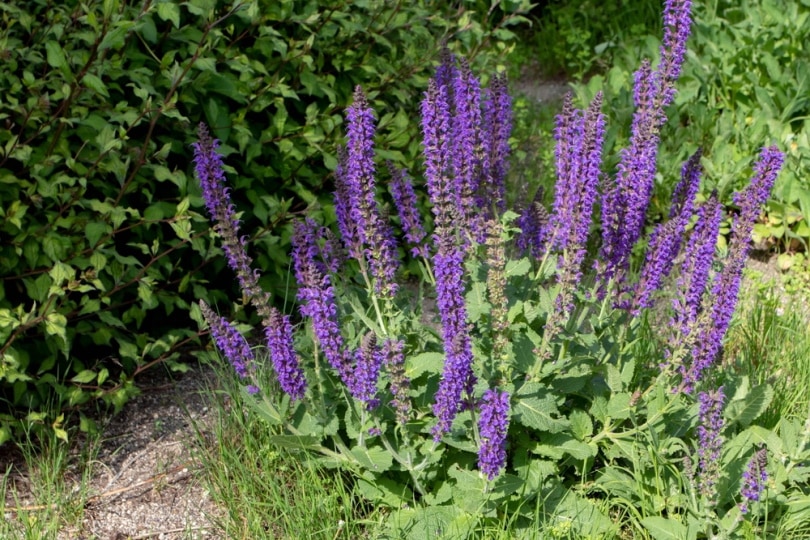
| Botanical name | Salvia officinalis |
| Sun requirements | Full sun |
| Soil requirements | Sandy, well-draining soil |
Sage is an excellent companion plant for lamb’s ear, mainly because the plant attracts many pollinators such as hummingbirds and butterflies. Sage also repels deer, rabbits, and other pests, which is highly beneficial for the lamb’s ear. Similar to lamb’s ear, sage requires minimal watering and is a low-maintenance herb.
With the same sun and soil requirements, these two plants will thrive together, leaving each other with plenty of space and nutrients.
4. Yarrow Plant
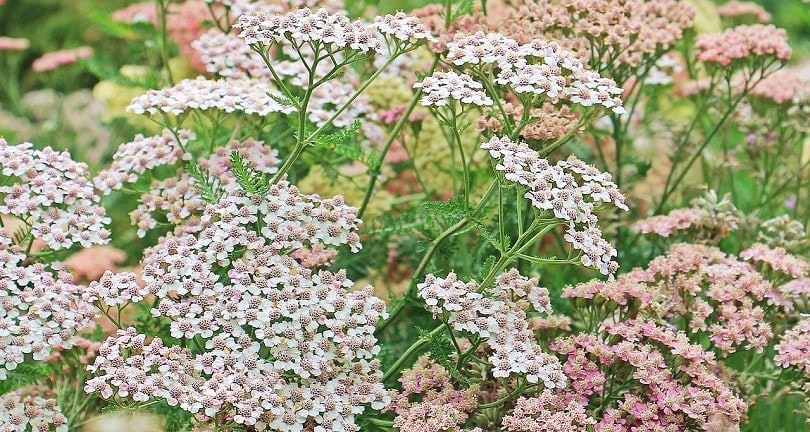
| Botanical name | Achillea millefolium |
| Sun requirements | Full sun |
| Soil requirements | Well-drained soil |
The yarrow plant is a hardy and strong perennial plant that enjoys temperate regions. Since these two plants enjoy growing in the same conditions they will be excellent companion plants. Yarrows enjoy plenty of sunlight, just like lamb’s ear. The flowers can be colorful and quite a lovely addition to a garden, appearing in shades of red, pink, yellow, and white.
The yarrow is a low-maintenance plant that needs very little care to thrive in your garden and grow lovely clusters of flowers.
5. Daylily
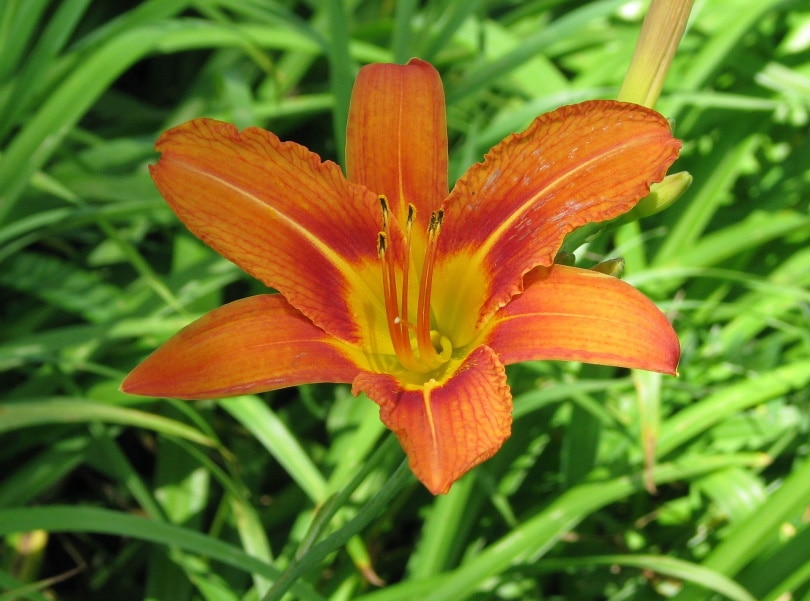
| Botanical name | Hemerocallis |
| Sun requirements | Full sun or partial shade |
| Soil requirements | Sandy, or clay soil with good drainage and water-retaining properties |
The daylily is an extremely easy plant to grow and an excellent companion plant for lamb’s ear. This gorgeous and sophisticated perennial plant will give your garden a delicate look when paired with a lamb’s ear. Daylilies are very low-maintenance, although they are strong and hardy. The flowers on a daylily bloom for only one day but present stunning shades of purple with a yellow tinge.
The daylily has a unique and soothing fragrance that many gardeners adore. Daylilies and lamb’s ear need the same conditions for healthy growth, which is why they are perfect when planted together.
Lamb’s Ear Growing Requirements and Plants to Avoid
Lamb’s ear is a beautiful flowering plant belonging to the mint family, with specific growing requirements. While this plant is self-sufficient, it requires some care to thrive. This lovely plant enjoys growing in well-drained soil, so it is best to provide sandy or clay soil topped with peat moss. Lamb’s ear is incredible when planted with companion plants that need the same conditions to grow healthy. Try planting them alongside other herbs in garden beds or mixed herb containers for the best results, and they will create a lovely, fragrant plant collection.
Avoid plants that thrive in moist or damp soil because overwatering a lamb’s ear can drown the plant. Also, avoid plants that cannot handle too much sun or prolonged sun exposure because the lamb’s ear will suffer in full shade.
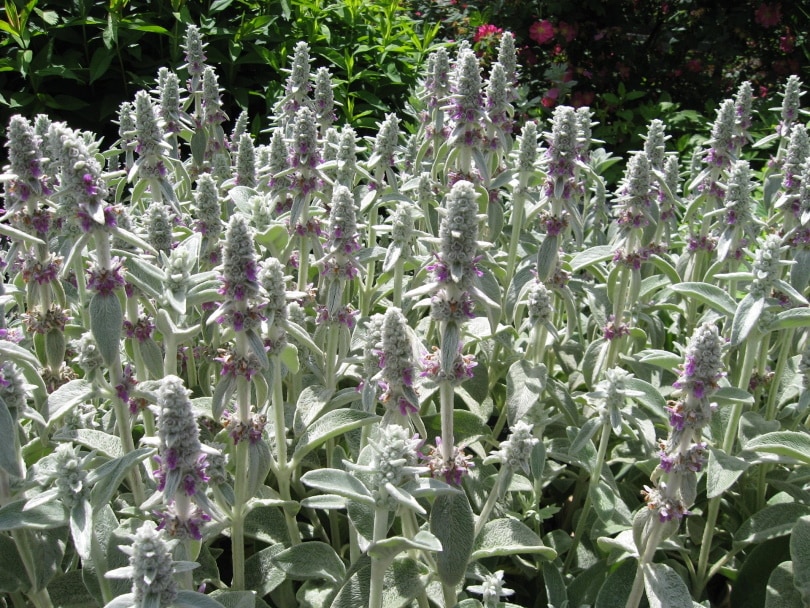
In Conclusion
Lamb’s ear is a gorgeous flowering plant that is very rewarding when taken care of in your garden. After planting lamb’s ear, you may wish to add companion plants to it. If you decide to plant lamb’s ear with other companion plants, all the plants from the above list will require the same conditions as lamb’s ear, and so are ideal companions.
Be sure to avoid any companion plants that don’t enjoy much sun or need lots of moisture, as lamb’s ear doesn’t thrive in moist, shady conditions.
- How To Successfully Grow A Lamb’s Ear Plant
- Companion Plants For Roses-Lambs Ear//Campbell’s Freedom Farm
- Lamb’s Ear Companion Plant: What Plants Grow Well With Lamb’s Ear
- Favorite Drought-Tolerant Perennials – Salvia and Lamb’s Ears – Homestead Gardens, Inc.
- 15 Hydrangea Companion Plants For Your Garden
Featured Image Credit: zprecech, Shutterstock
Contents

